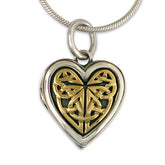August: The Hazel Tree

Hazel is the Celtic Zodiac Tree from August 5 to September 1. The Hazel Tree is tied to inspiration and wisdom. How can we begin to understand this time of year as the ancient tribal people of Europe once did? We can begin by looking around at what is taking place in the yearly cycle. August is the time when the summer ripens and mellows. The pumpkins are green, their orbs increasing in size by the day. Occasionally, a hint of autumn drifts through the air.
The people who saw the deep and abiding alliance between the trees, months and lunar cycles tasted the seasons intimately—for their survival depended upon this relationship. They chose to see August through the lens of the hazel tree. The Celts called this time Coll, which roughly translates as inner life force—pointing to the connection between essential life energy and this segment of our seasonal cycle. Summer is the time of work, maximum growth, and the expression of life in the outer world. This is due, mainly, to the length of the days—which generate so much activity.
Especially from the practical point of view of a people without the technological resources that we have today, the fullness of our life force was needed simply to survive. How else could a community prepare for the dark months ahead? There’s no growing food in winter.
Mythologically, the hazel is tied to inspiration and wisdom. The Gaelic word for hazel nut is cno; while the word for wisdom is cnocach. The connection between hazel nut and wisdom is from a story repeated in many variations of nine hazel trees surrounding a sacred spring. Nuts dropped into the water were eaten by salmo—a sacred fish which absorbed the wisdom. Salmon are almost synonymous with wisdom in Celtic culture. They are also a keystone species, critical for their entire habitat. Later, the salmon that ate the nut was eaten by Fionn mac Cumhaill, a boy who became a hero in Gaelic mythology. The number of bright spots on a salmon indicate how many hazel nuts it has eaten.
Then there is also the metaphor of the delicious nut, which grows a hardened husk as it matures over the seasons. Like a nut, inside us there are layers, or perhaps even shells or obstacles that must be crossed or broken through before we can enjoy the delightful treasure within—our inner wisdom, the universal knowledge. It follows, then, that the wood from the tree was used in the baelfire of Beltane. Staves, talismans, and wands were also carved from the hazel wood.
The hazel tree was also employed as an alliance-builder to help struggling couples. Holding it, connecting with the energy of the tree in a ceremonial context, could assist in an opening that could allow room for greater understanding, healing and forgiveness. On a very practical level, the wood was used to create U-shaped stakes which were utilized to anchor thatched roofs. Basket makers gathered the young shoots to create a variety of containers. The leaves themselves, usually among the first to appear in spring, were used to feed cows and to increase the yield of milk. The nuts themselves are full of protein and were a major staple.
September 14th, Holy Cross Day, was a school holiday in England up until the First World War. The custom on this day was for school children to go off and gather nuts. Again, all these activities associated with the tree express a grounded yet essential way of moving through life at a time when there is great energy. From both a pragmatic and spiritual viewpoint, the hazel nut teaches about vitality that springs from inner wisdom—activity with purpose and intent. Thus, the hazel tree is an ideal alliance for walking in balance with this time of year.











